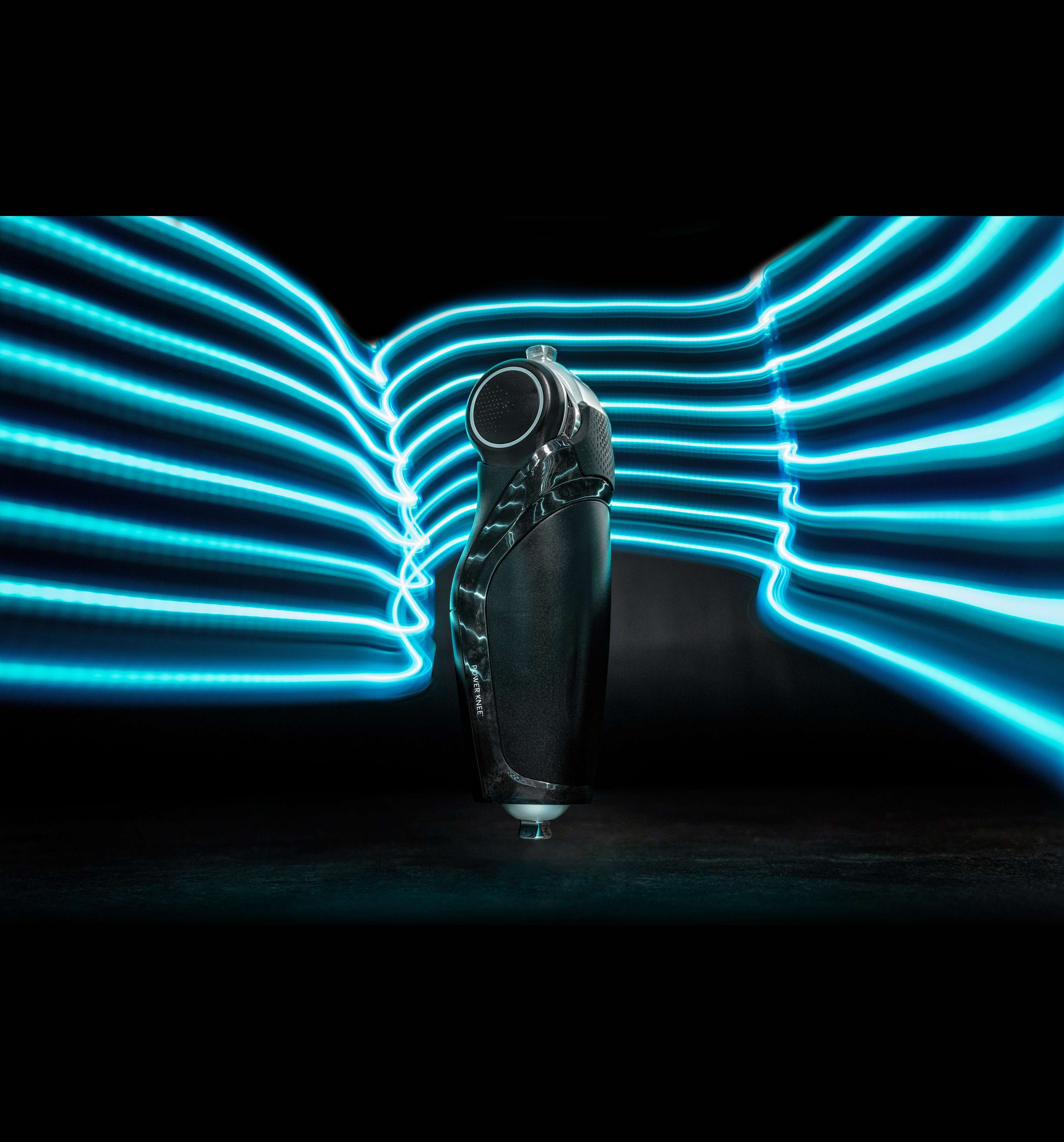Why Power?
When you are living with limb loss, power is a missing ingredient. Returning power to the mobility equation has demonstrated benefits we intuitively understand. With power, your steps get lighter, and your world expands.
Reduce Energy Cost
"Without certain muscles, people who use
a prosthesis expend 30-60% more energy
than those with intact limbs." ¹
Power Knee lowers the energy cost
of walking² as compared to regular
microprocessor knees.
Improve Symmetry
For most people with limb difference,
it is challenging to walk symmetrically.
The negative results impact stamina every
day and lead to a greater risk of low back
pain and osteoarthritis.³⁻⁷
Power Knee improves symmetry* across
activities including walking, standing up,
and navigating stairs.²𝄒⁸⁻¹⁰
The Story of
Power Knee
A passion for Life Without Limitations fuels our engineers, and the results of their 15-year commitment is changing lives.
Changing the landscape of prosthetic rehabilitation
Power Knee presents new opportunities in rehabilitation and requires a fresh approach. Watch this video to learn more.
How is Power Knee Different Than a Typical Microprocessor Knee?
Passive Prosthetic Knees
Without power, prosthetics knees are passive. Microprocessor knees (MPKs) do more to control motion like providing resistance while sitting down and controlling walking speed. MPKs revolutionized prosthetic care in the past 20 years, improving safety and mobility by delivering intelligent control of motion.
But there was still a missing ingredient that is fundamental to how we move – Power.
Powered Prosthetic Knees
Power Knee is a new category of knee joint and ushers in a new era in prosthetic technology.
Building on MPK technology benefits, the addition of power transforms by creating motion. With the harmonic drive motor, less energy is required, and the results are a more natural and efficient gait and new functions such as powered lift for standing or going up stairs.
Features & Benefits
At the heart of Power Knee, you’ll find a motor that helps fill the absence of muscle power. When you’re walking, you experience powered swing. When you’re standing up, you experience powered lift. When you’re ascending or descending, Power Knee provides the support and assistance you need to manage slopes and stairs. Simply summed up, you benefit both short- and long-term from symmetry, stability, and endurance.
How Power Knee Works
Fit for Your Lifestyle
Testimonials
Who is Power Knee For?
In its many forms, power moves us all. Whether you have a congenital limb difference, have had a recent transfemoral amputation, or anything in between, power may have a place for you.
Clinically, Power Knee is for people with unilateral or bilateral amputations at knee disarticulation, hip disarticulation, or transfemoral levels. Your activity level is also an important factor, and a great discussion to have with your Prosthetist.
The best way to experience the benefits of Power Knee is to try it for yourself. Check out stories and insights from people with experiences like yours, take notes on our Power Knee information sheet, and share the details with your prosthetist.
For Users
Resources for Users of Prosthetics
What You Can Expect in Your Fitting
Preparing for your fitting is a great way to make sure time with your prosthetist is used well. Knowing what a typical Power Knee fitting includes may help but your appointment will be unique to you.
For Professionals
Resources for Healthcare Professionals
Key Features
- Auto-adaptive real-time stance and swing control
- Active assistance in level-ground walking, step-over-step stair ascent and when standing up
- 25 hour typical usage on a single battery
- Accompanying Össur Logic app for iOS devices provides simple practitioner setup and adjustment
- Energy returning stance flexion
- Intuitive knee lock when standing, facilitating equal weight distribution
- Replaceable battery, can be charged in knee or separately
Product Specifications
Level of limb difference: Knee disarticulation, hip disarticulation, and transfemoral
Impact levels: Low and moderate
Max patient weight: 116 kg (256 lbs)
Reimbursement codes: L5828, L5845, L5848, L5856, and L5859
Try Power Knee
References
- Genin JJ, Bastien GJ, Franck B, Detrembleur C, Willems PA. Effect of speed on the energy cost of walking in unilateral traumatic lower limb amputees. Eur. J. Appl. Physiol. 2008;103(6): 655
- Power Knee Mainstream Dynamic - Evaluation Report Synopsis, Össur hf, Steinþóra Jónsdóttir (2021). Data on file at Össur.
- Devan H, Tumilty S, Smith C. Physical activity and lower-back pain in persons with traumatic transfemoral amputation: a national cross-sectional survey. J Rehabil Res Dev 2012;49(10):1457-66.
- Devan H, Hendrick P, Ribeiro DC, Hale LA, Carman A. Asymmetrical movements of the lumbopelvic region: is this a potential mechanism for low back pain in people with lower limb amputation? Med. Hypotheses 2014;82(1):77–85.
- Matsumoto ME, Czerniecki JM, Shakir A, Suri P, Orendurff MS, Morgenroth DC. The relationship between lumbar lordosis angle and low back pain in individuals with transfemoral amputation. Prosthet and Orthot Int 2019 Apr;43(2):227-232. Epub 2018 Aug 18.
- Morgenroth DC, Orendurff MS, Shakir A, Segal A, Shofer J, Czerniecki JM . The relationship between lumbar spine kinematics during gait and low-back pain in transfemoral amputees. Am J Phys Med Rehab 2010;89(8):635–43.
- Harandi VJ, Ackland DC, Haddara R, Lizama LE, Graf M, Galea MP, Lee PV. Gait compensatory mechanisms in unilateral transfemoral amputees. Medical Engineering & Physics. 2020 Jan 7.
- Wolf, E. J., Everding, V. Q., Linberg, A. A., Czerniecki, J. M. & Gambel, C. J. M. Comparison of the Power Knee and C-Leg during step-up and sit-to-stand tasks. Gait Posture 38, 397–402 (2013).
- Highsmith, M. J. et al. Kinetic asymmetry in transfemoral amputees while performing sit to stand and stand to sit movements. Gait Posture 34, 86–91 (2011).
- Knut Lechler. Biomechanics of sit-to-stand and stand-to-sit movements in unilateral transfemoral amputees using powered and non-powered prosthetic knees - Congress Lecture [5038] Abstract [1459]. (2014).
References for our brochure can be found here.
